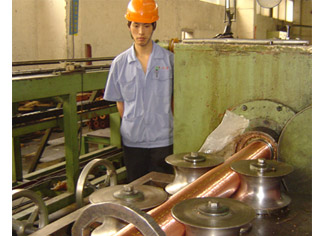Service industry on the rise in Yangtze River Delta
 By Jean-Charles Briand, Noemie Lanes and Anna Sellger
By Jean-Charles Briand, Noemie Lanes and Anna Sellger
SHANGHAI, April 30 – To understand how China’s economy is evolving, just look at the Yangtze River Delta. With 30 percent of the country’s private sector, this populous and wealthy region including Shanghai, Jiangsu and Zhejiang provinces has relied heavily on its secondary market for growth. But that’s changing as more and more foreign direct investment pours into tertiary businesses focused on finance, wholesale and retail, information technology and real estate. The result is a rising service sector that many believe is China’s next step toward developing a modern economy.
Industrial strengths
With China’s most developed private sector, the delta now accounts for roughly 20 percent of the national GDP, its own total reaching some RMB4,775.4 billion two years ago. Jiangsu contributed most to the region’s GDP, about 45 percent, while Zhejiang and Shanghai represented about 33 percent and 22 percent, respectively. After Shanghai the most economically vibrant cities were, in descending order by economic size, Suzhou, Hangzhou, Wuxi, Ningbo and Nanjing.
Manufacturing and other secondary industries drive much of the region’s development, about 50 percent of its GDP. Heavy industries historically have accounted for the lion’s share, though the delta has lured more high-tech industry in recent years.
Shanghai, for example, has undertaken efforts to move outside its walls businesses like textile and heavy-equipment manufacturing involving low value-added, high-pollution and high-energy consumption products. At the same time, the city has tried to foster technology industries—including computers, telecommunication equipment, integrated circuit manufacturing and biomedicine—through investments in universities and technology parks, as well as the construction of enterprise incubation bases.
Shanghai’s pillar industries now include electronic information, automobile, petrochemical and fine chemical, fine steel and iron, equipment complex, and pharmaceutical and biotechnology.
Jiangsu and, in particular, Zhejiang have major light industry businesses like textile, and both have focused on developing heavy industries such as equipment manufacturing and chemical production.
Yet the two provinces have also sustained high-tech industry, capitalizing on a good system of local universities and colleges, as well as foreign investment from Taiwanese enterprises and others who have shifted high-tech product manufacturing to the YRD. The software industry is growing especially fast, and there are more than 10 software parks throughout the region. For its part, Jiangsu has scored more high-tech success than Zhejiang (Hangzhou’s flourishing tech hub being once exception) and even created a software industrial belt along the Yangtze River.
Among Jiangsu’s key industries are electronics, telecommunications, automobile, chemical materials and chemical products, general and special purpose equipment manufacturing, electrical equipment manufacturing, and metal products. Zhejiang’s include textile, general-purpose equipment, electric equipment and machinery, transport equipment, raw chemical materials and chemical products.
Zhejiang also is known for its advanced development zones. The province is home to the largest number of industrial clusters, including eight state-level and more than 50 province-level economic and technological development zones. And it aims to boost those capabilities with an industrial belt around Hangzhou Bay.
The rise of services
Look beyond the region’s heavy industry, however, and you’ll see a burgeoning service sector. These days, most of the delta’s international direct investment is flowing toward service industries, from wholesale and retail businesses, to real estate, transportation and distribution companies. Others include logistics and postal services, information services and software, and boarding and catering.
In 2006, more than 36 percent of Jiangsu’s companies belonged to the tertiary sector, representing a growth rate of almost 16 percent from the previous year. In Zhejiang, that figure was about 40 percent, up more than 15 percent. Shanghai’s service sector, meanwhile, accounted for nearly 51 percent of its companies.
Wholesale and retail companies dominate the megalopolis’ service sector, though financial services and real estate also have a substantial presence. And despite its many private enterprises, the city is still characterized by a large state sector.
The two provinces, meanwhile, count retail sales and logistics among their largest service industries. Jiangsu, with its many tech businesses, also is experiencing growth in information services; Zhejiang, with its port in Ningbo, is steeped in logistic work. Both also have a strong tourist industry because of cultural attractions like Hangzhou and Suzhou.
- Previous Article Central China Expo promotes inbound investment
- Next Article May China Briefing out now


























